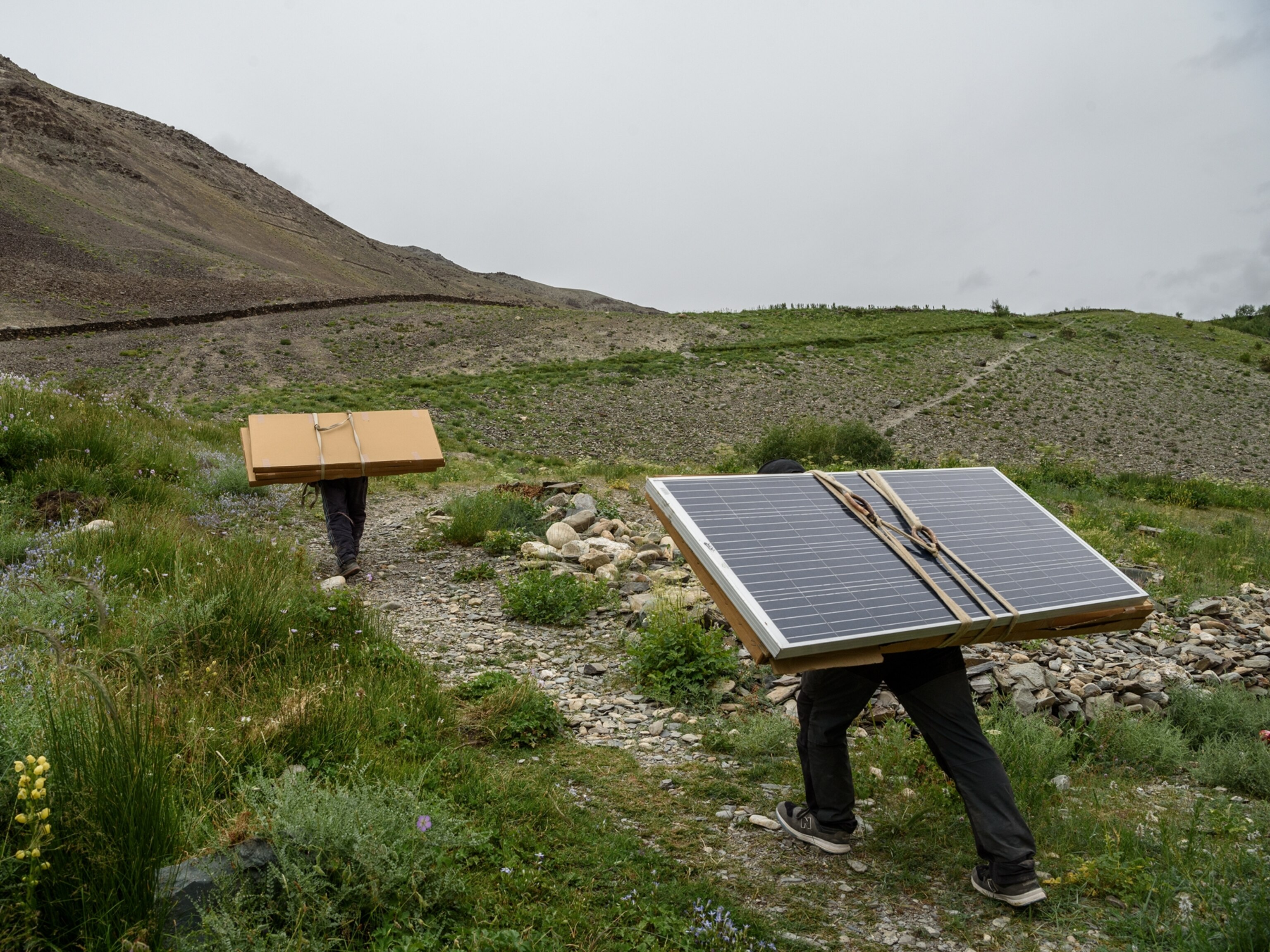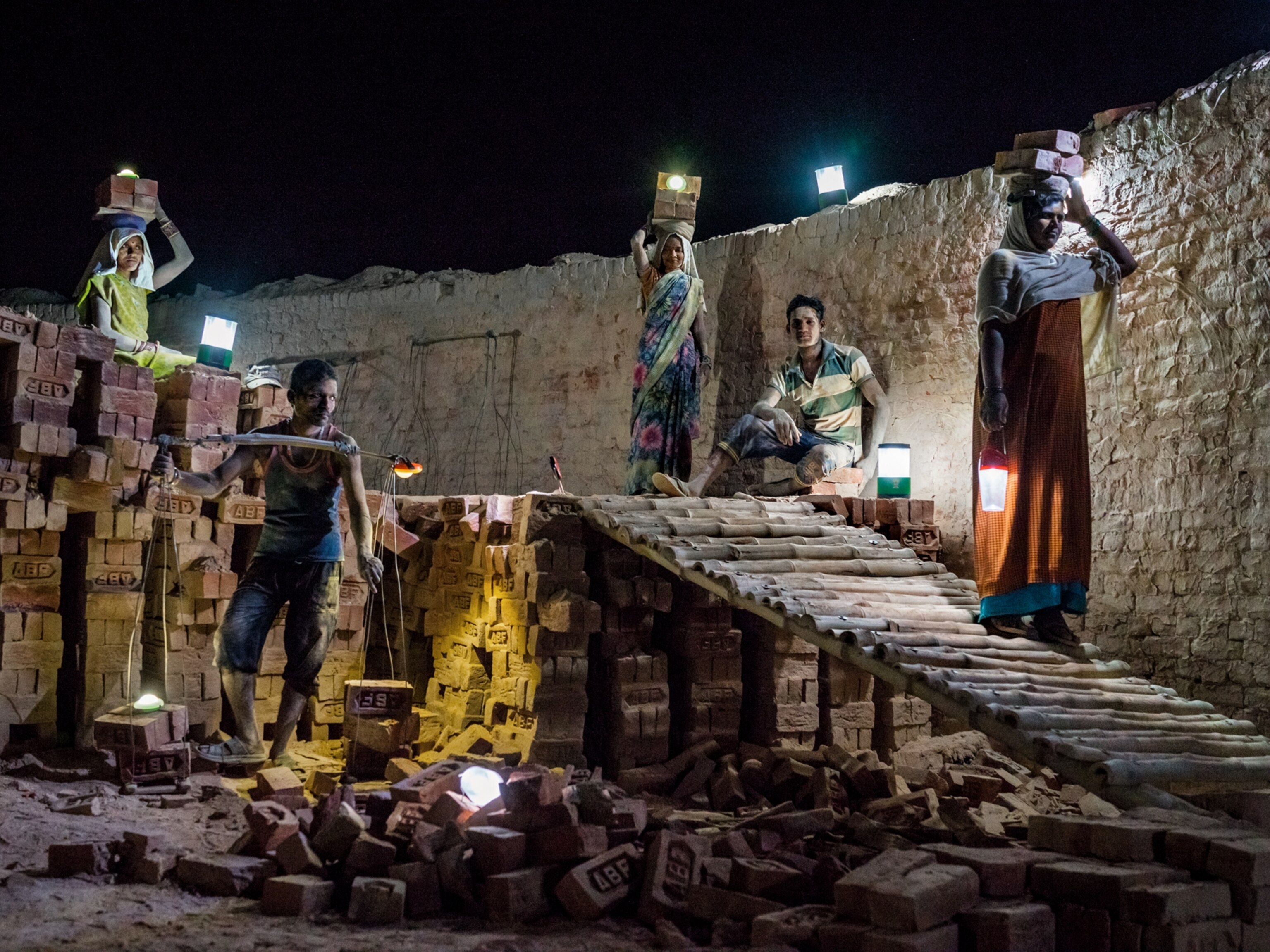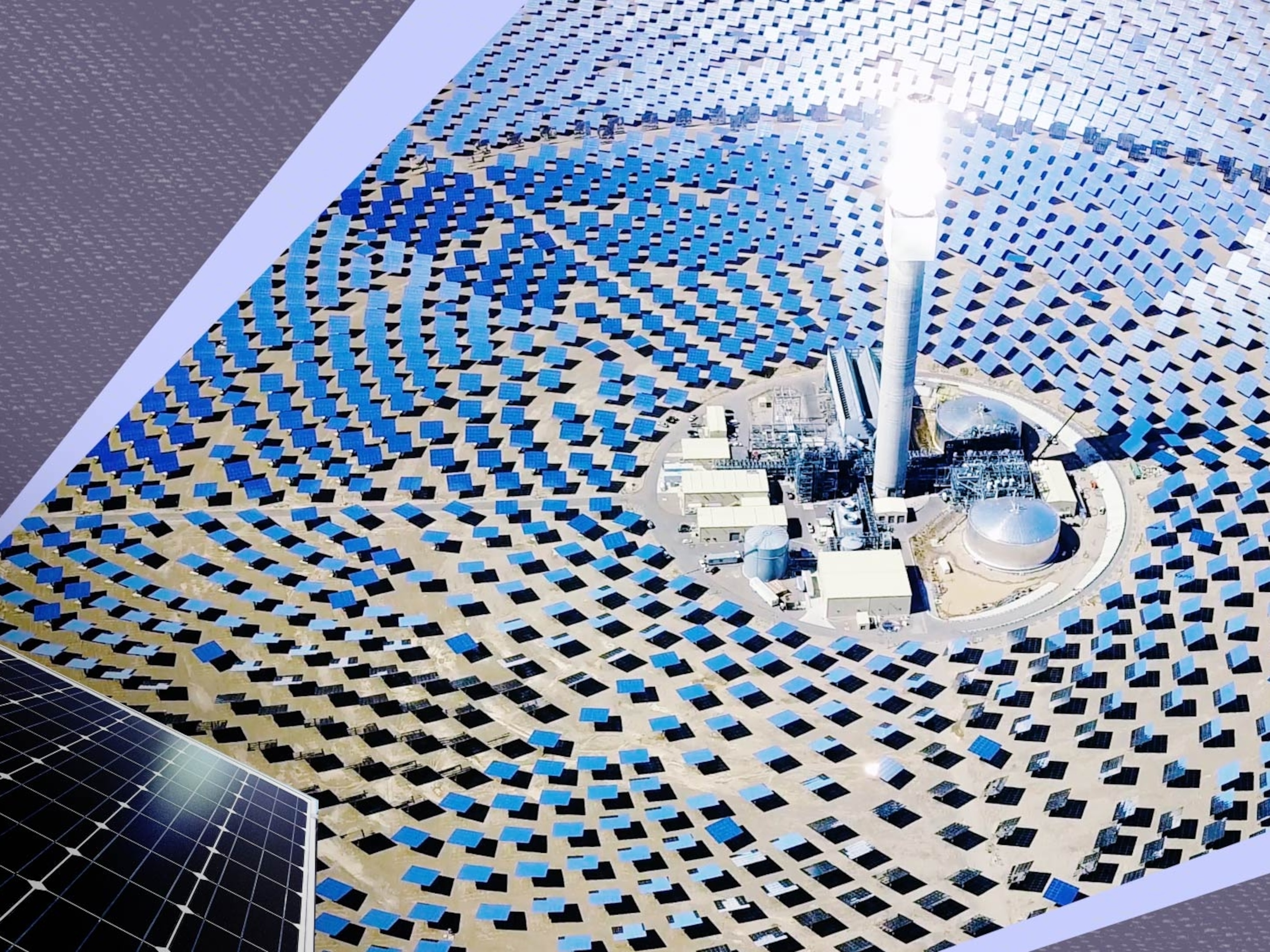You’ve probably seen or heard something about solar roadways, or as one promotional video puts it, “solar freakin’ roadways!” The bold idea to turn roads into solar generation infrastructure has captured the imagination of millions in recent weeks.
The concept is an example of the fascinating advancements in solar energy technology that are nudging our society ever closer to a clean energy future. From roof tiles that double as solar panels to $25 solar powered cell phone chargers, solar energy is becoming more affordable and accessible by the day. As solar panels get smaller, more powerful, and more versatile, they will start showing up all over the manmade world, maybe even on roads and sidewalks. In addition to expanding much-needed zero-carbon renewable energy generation, this evolution also offers a huge and largely overlooked environmental benefit: “no-new-impact” energy development.
The U.S. is in the middle of an energy boom. New infrastructure –from solar farms to natural gas wells to transmission lines—is popping up all over the country. This boom is transforming land and water use across the country, from the grasslands of North Dakota to the mountain forests of West Virginia. New energy development is rapidly changing the face of our natural landscapes: huge solar farms are disrupting desert ecosystems in the Southwest; natural gas wells and associated structures like roads and pipelines are carving up mountain forests in the Appalachians.
In February, a Nature Conservancy study found that wind and natural gas development in six Appalachian states threaten nearly 1.5 million acres of natural habitat through soil compaction and construction activities. The impact of natural gas development in the Appalachians can already been seen. Miles and miles of dense green forests and undulating mountain ridges are now crisscrossed by brown roads and gray concrete (the photo at the top of this page provides an example).
If just a fraction of the land area in the Appalachian region and the rest of the country that is ripe for energy development could be preserved in its natural state, the benefits to nature and people would be considerable. And that’s an aspect of the solar roadways idea that would be a guaranteed success. Energy installations that utilize or replace existing infrastructure don’t require trees to be cut down or new roads to be built—all of the direct effects on the environment have already happened.
No-new-impact energy development can come in the form of a bold new idea, or in more familiar types of energy installations like rooftop solar panels. In the Appalachians, no-new-impact development can be achieved by placing natural gas wells at old coal mining sites. Or infrastructure can be placed as close together as possible—by running a pipeline along the side of a road, for example—a practice known as co-location. Co-location is easy and relatively inexpensive. All it takes from development companies is some advance planning and dedication to minimizing environmental impacts.
Booming energy development will continue in the U.S. and other parts of the world for years, or even decades to come. There’s no question that the development of no- and low-carbon energy resources is crucial to mitigating climate change, and energy companies will continue to extract fossil fuel resources in the U.S. as long as it’s profitable. Without careful planning and attempts to minimize the footprint of that development on natural landscapes, new energy resources could come at the cost of healthy ecosystems and all the benefits they deliver to people, including clean air and clean water.
The more energy developers, government regulators, and members of the public value energy development that makes no new imprints or smaller imprints on the natural world, the more of that natural world will remain for our children and their children to enjoy. So whether it’s a natural gas well on an old coal mine site or “solar freakin’ roadways,” no-new-impact energy development is the best kind of energy development for nature and for people, and it deserves our support.
Related Topics
You May Also Like
Go Further
Animals
- This ‘saber-toothed’ salmon wasn’t quite what we thoughtThis ‘saber-toothed’ salmon wasn’t quite what we thought
- Why this rhino-zebra friendship makes perfect senseWhy this rhino-zebra friendship makes perfect sense
- When did bioluminescence evolve? It’s older than we thought.When did bioluminescence evolve? It’s older than we thought.
- Soy, skim … spider. Are any of these technically milk?Soy, skim … spider. Are any of these technically milk?
- This pristine piece of the Amazon shows nature’s resilienceThis pristine piece of the Amazon shows nature’s resilience
Environment
- This pristine piece of the Amazon shows nature’s resilienceThis pristine piece of the Amazon shows nature’s resilience
- Listen to 30 years of climate change transformed into haunting musicListen to 30 years of climate change transformed into haunting music
- This ancient society tried to stop El Niño—with child sacrificeThis ancient society tried to stop El Niño—with child sacrifice
- U.S. plans to clean its drinking water. What does that mean?U.S. plans to clean its drinking water. What does that mean?
History & Culture
- Meet the original members of the tortured poets departmentMeet the original members of the tortured poets department
- Séances at the White House? Why these first ladies turned to the occultSéances at the White House? Why these first ladies turned to the occult
- Gambling is everywhere now. When is that a problem?Gambling is everywhere now. When is that a problem?
- Beauty is pain—at least it was in 17th-century SpainBeauty is pain—at least it was in 17th-century Spain
- The real spies who inspired ‘The Ministry of Ungentlemanly Warfare’The real spies who inspired ‘The Ministry of Ungentlemanly Warfare’
Science
- Here's how astronomers found one of the rarest phenomenons in spaceHere's how astronomers found one of the rarest phenomenons in space
- Not an extrovert or introvert? There’s a word for that.Not an extrovert or introvert? There’s a word for that.
- NASA has a plan to clean up space junk—but is going green enough?NASA has a plan to clean up space junk—but is going green enough?
- Soy, skim … spider. Are any of these technically milk?Soy, skim … spider. Are any of these technically milk?
- Can aspirin help protect against colorectal cancers?Can aspirin help protect against colorectal cancers?
Travel
- What it's like to hike the Camino del Mayab in MexicoWhat it's like to hike the Camino del Mayab in Mexico
- Is this small English town Yorkshire's culinary capital?Is this small English town Yorkshire's culinary capital?
- This chef is taking Indian cuisine in a bold new directionThis chef is taking Indian cuisine in a bold new direction
- Follow in the footsteps of Robin Hood in Sherwood ForestFollow in the footsteps of Robin Hood in Sherwood Forest





